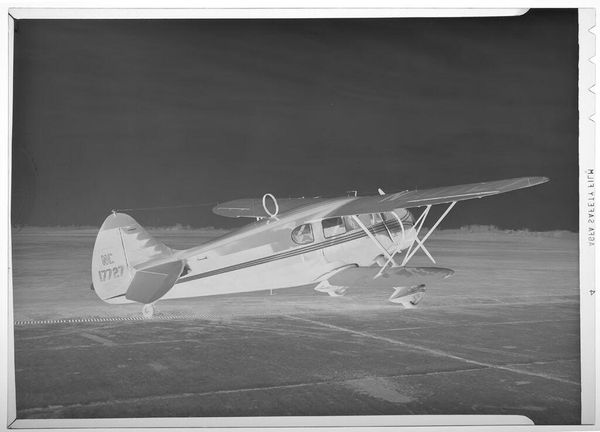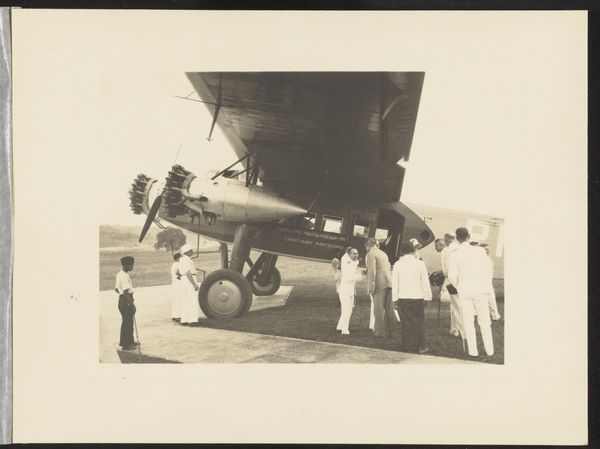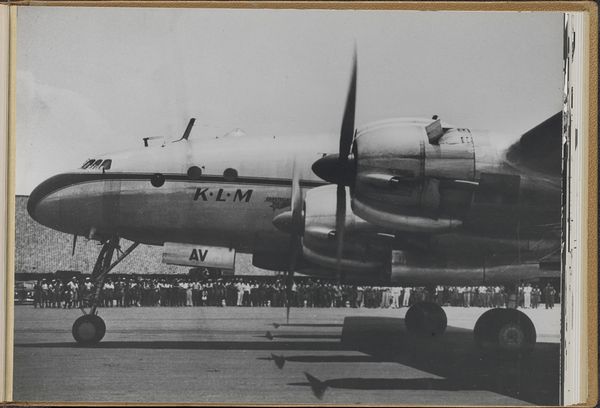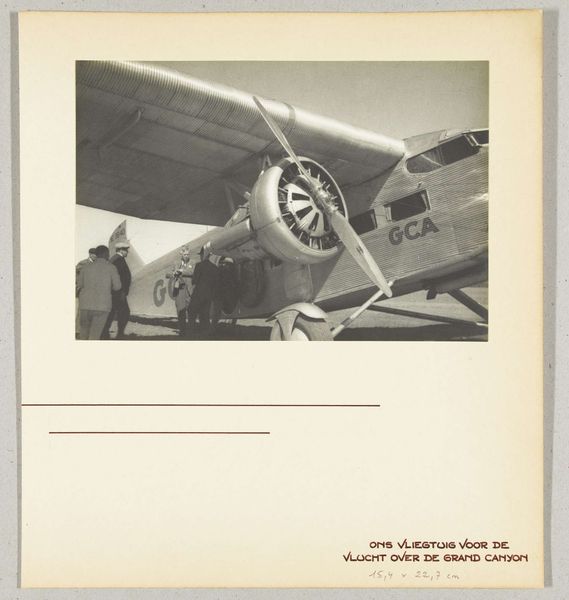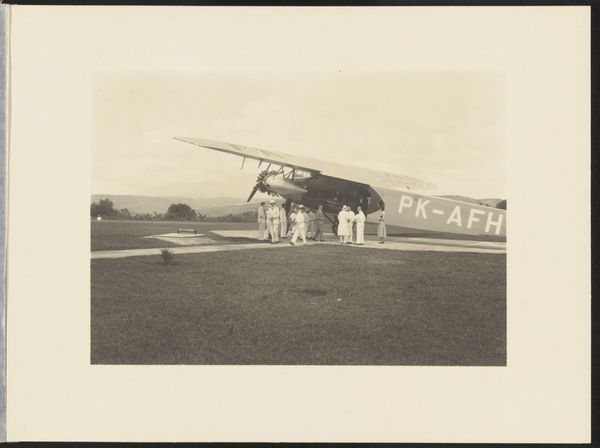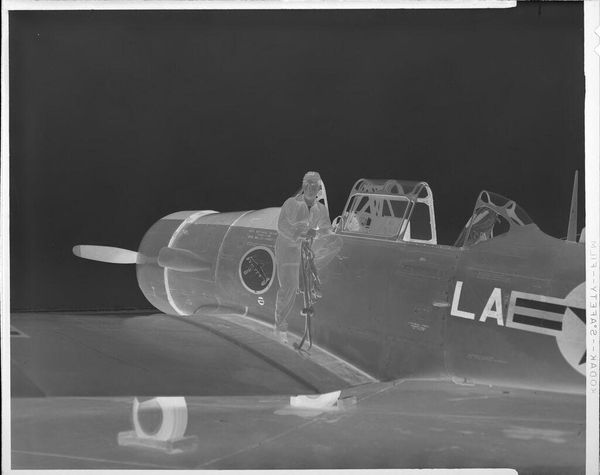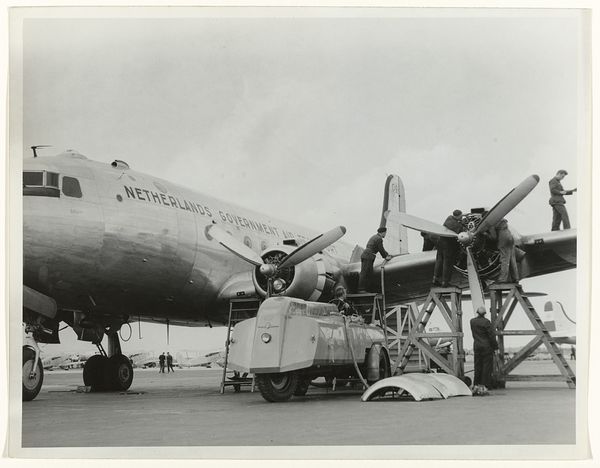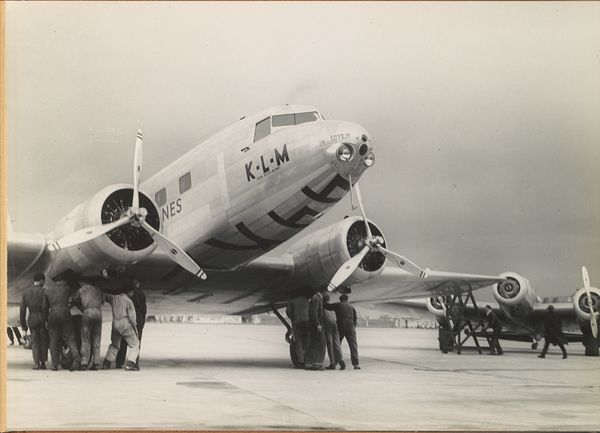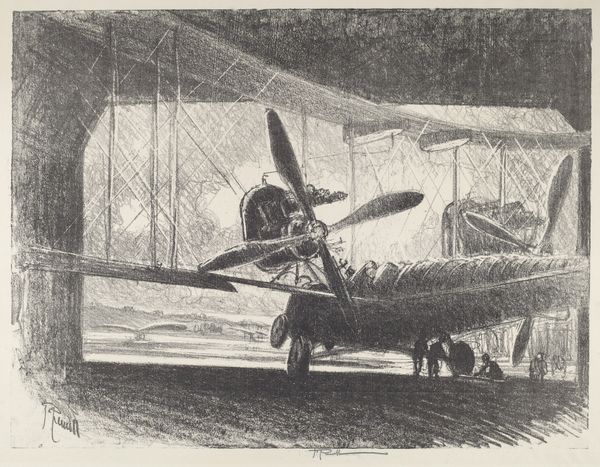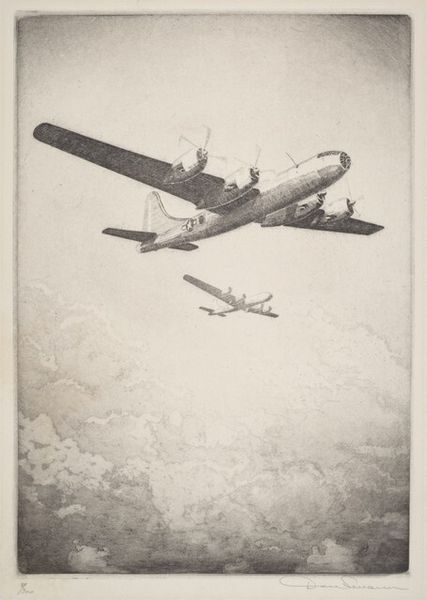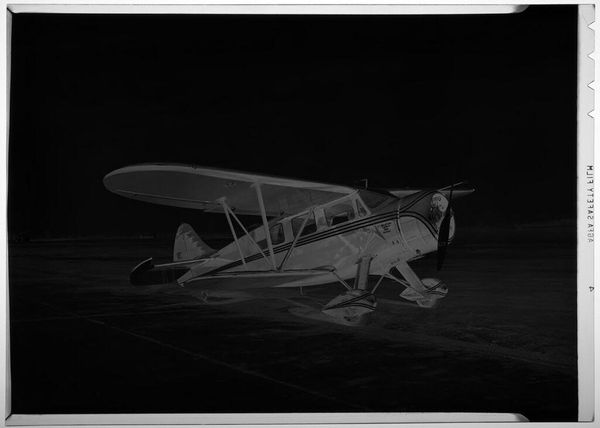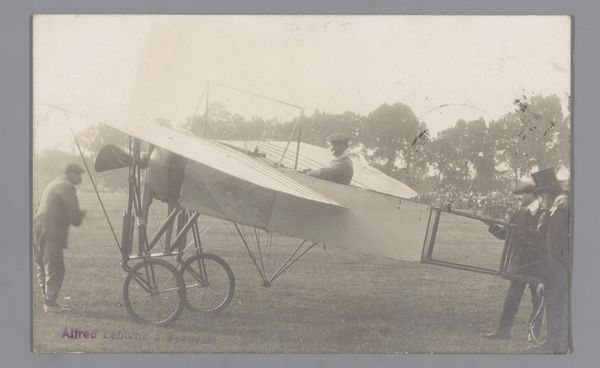
Vertrek van de delegatie van gouverneur A.H. Neijs na het bezoek aan de leprozerie Pelantoengan 1931 - 1935
0:00
0:00
photography, gelatin-silver-print
#
natural tone
#
landscape
#
photography
#
gelatin-silver-print
#
cityscape
#
modernism
Dimensions: height 117 mm, width 165 mm
Copyright: Rijks Museum: Open Domain
Curator: This gelatin-silver print by Otto Hisgen, made sometime between 1931 and 1935, is titled "Vertrek van de delegatie van gouverneur A.H. Neijs na het bezoek aan de leprozerie Pelantoengan." Editor: It has a very stark, almost documentary feel. The rigid geometry of the airplane against what looks like a rural landscape—there's a certain severity to it, isn’t there? Curator: Indeed. Beyond the aesthetics, the subject matter holds significant weight. We see here a tangible connection between colonial administration and public health in the Dutch East Indies. Leprosy colonies, like Pelantoengan, were often sites of intense social control and medical intervention, revealing much about power dynamics and societal attitudes towards disease. Editor: So the photograph then acts as a visual record of governance, literally showing officials going in and out. It prompts uncomfortable questions about access and privilege during that era, especially considering the context of institutionalized segregation and public health crises. Curator: Precisely. It reflects how these colonial institutions shaped perceptions of difference and otherness. The act of documenting such visits by people such as Governor Neijs, it solidifies a particular narrative regarding control, paternalism, and even performative care. The choice to present this specific departure signifies an existing relationship that merits this representation. Editor: This makes me think about the role of photography itself in legitimizing colonial projects. Was Hisgen commissioned, or was this personal documentation? The images get disseminated as proof of something; proof of care, proof of modernization, proof perhaps also of progress in seemingly intractable problems. Curator: Finding further specifics of his commission will provide important layers, but the image undeniably showcases the complicated visual relationship between the governing and the governed. How was this photograph displayed? Who was the intended audience? It makes one consider the long shadow that this imagery continues to cast on current conversations surrounding identity and politics in post-colonial regions. Editor: It is not only about progress, though, but the advancement of technology, modernism and power during the early twentieth century. Aviation became increasingly influential to trade and expansion during that time, the plane, with its clean, modern lines in the natural setting, almost implies a sense of power for the governing body represented in the delegation's flight. Curator: You've given me something to contemplate; considering it is a piece of history caught in a still moment that continues to generate relevant contemporary discussions. Editor: And for me, too. These colonial images require thorough analysis because they remind us of both what was, and what remains.
Comments
No comments
Be the first to comment and join the conversation on the ultimate creative platform.

